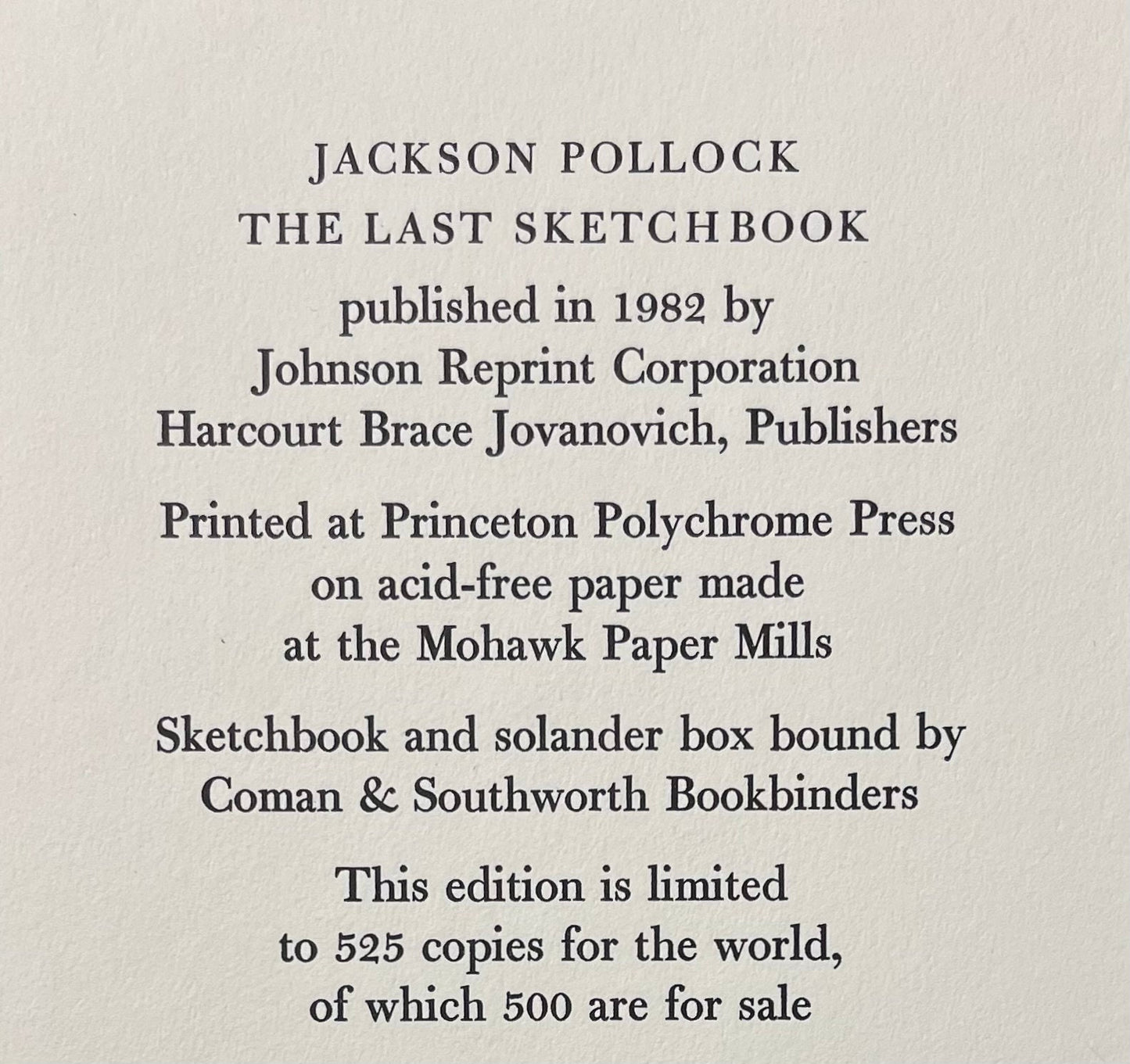Jackson Pollock, Composition, Jackson Pollock, The Last Sketchbook, Lithograph
Jackson Pollock, Composition, Jackson Pollock, The Last Sketchbook, Lithograph
Couldn't load pickup availability
Condition: Pre-Owned
Lithograph on vlin Mohawk paper.
Inscription: unsigned and unnumbered, as issued.
Paper Size: 5 x 12 inches.
Excellent condition.
Notes: From the album, Jackson Pollock, The Last Sketchbook, 1982.
Published by Harcourt Brace Jovanovich, Publishers, New York, and Johnson Reprint Corporation, New York, under the direction of Eugene Victor Thaw, New York, with the authorization of Lee Krasner, New York; printed by Princeton Polychrome Press, Princeton Junction, New Jersey, under the direction of David Johnson, New York, 1982.
Excerpted from the album, Jackson Pollock, The Last Sketchbook, published in 1982 by Johnson Reprint Corporation, Harcourt Brace Jovanovich, Publishers; printed at Princeton Polychrome Press on acid-free paper made at the Mohawk Paper Mills; Sketchbook and solander box bound by Coman & Southworth Bookbinders. This edition is limited to DXXV examples for the world, of which D are for sale.
All items are carefully packed and shipped via insured courier services. Processing time: 1–3 business days.
Tracking details will be provided once shipped.
Read more of our
Shipping Policy.
All sales are final unless otherwise stated. Authenticity guaranteed. Please read full terms on our website before purchase.
Read more of our
Terms of Service.










































